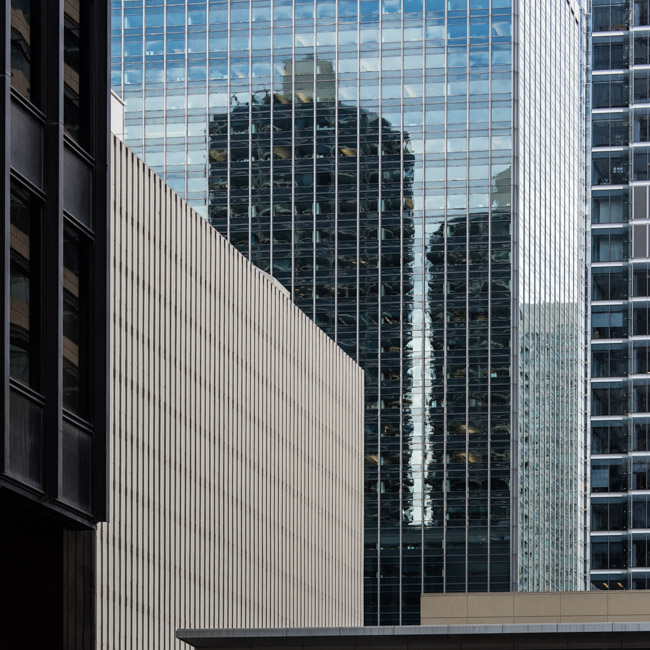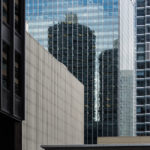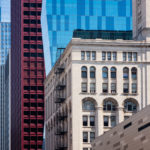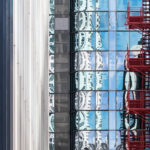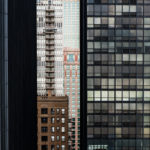Angie McMonigal
In the city that built the first skyscraper, the lines that structure the urban landscape run north and south, east and west thus creating ‘the grid’. However, the most striking lines are the ones that run from street to sky. The facades of Chicago’s imposing towers make up this whole other grid, the one staring straight at you, composed of windows, beams, balconies, pillars, rooflines.
We are surrounded by horizontal and vertical lines repeating rhythmically in steel, brick, stone, and glass. I’ve started to see this grid as a quilt. Because I don’t just see individual buildings standing there as imposing towers of steel. I see a patchwork. Different colors, different textures, different materials, different architectural styles, all pieced together. Some patches are pristine and new, others a little more worn. There are iconic patterns, immediately recognizable, and also bits that are hard to identify, fragments that feel familiar but are hard to place. Some blocks make clear that they were destined to be joined together, others look like accidents, or even challenging points of tension.
We often think of photographs as capturing a single moment in time. A shutter clicks, an instant is preserved. When I started photographing the city as an urban quilt, I became more aware of the way these buildings preserve different moments from our history. Those moments aren’t arranged in a nice orderly timeline like you’d find in a history book or a museum display. They’re standing next to each other, layered on top of one another. My photographs flatten out the miles between the streets and erase the years that separate one construction project from the next. It’s all stitched together now on a single plane.

